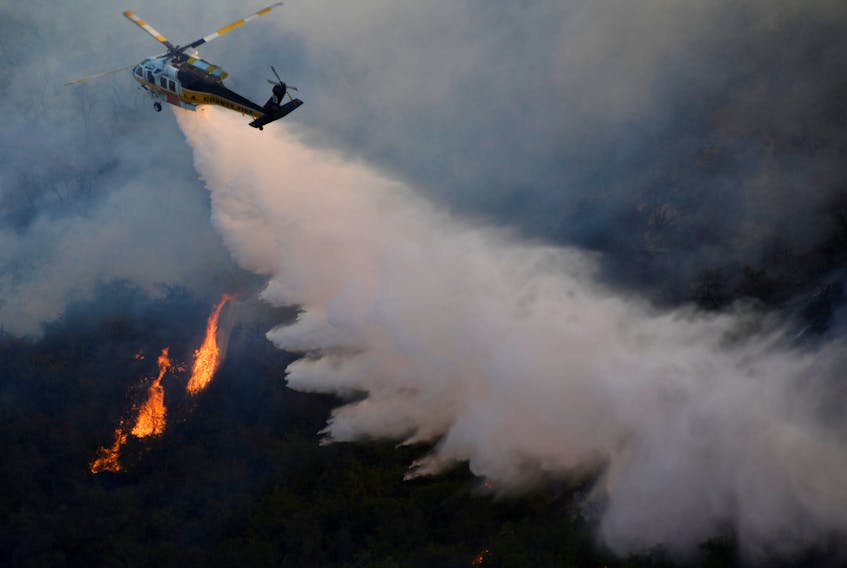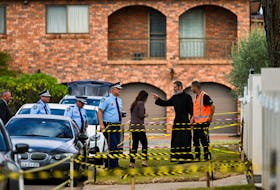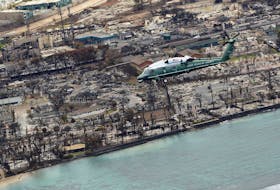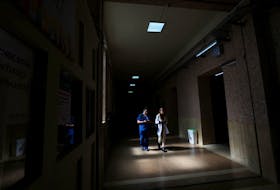By Andrew Hay
(Reuters) - California utility PG&E Corp has imposed 10 intentional blackouts this year to reduce risks its power infrastructure could spark wildfires and said they will continue for a decade.
PG&E initially said outages would happen only a couple of times a year, but millions of Californians were hit by four massive shutdowns in October alone.
The outages started in June, growing in duration and scale, with the largest in state history occurring on Oct. 26, cutting electricity to around 2.8 million people over five days.
With six of the 10 most destructive fires in California history started by electrical equipment or power lines, PG&E says shutdowns are a needed measure during windstorms. The state's largest utility filed for bankruptcy in January, citing $30 billion in civil liabilities from blazes, and says it cannot afford further penalties.
The company's critics say Californians are paying for PG&E's failure to upgrade infrastructure and want to see the company "harden" power systems, rather than close them down.
Has the United States ever seen anything like this?
Energy experts say the scale of California's shutdowns appear unprecedented in the United States, where intentional outages usually occur at a power plant threatened by a hurricane or in a localized area ahead of a storm.
"It's kind of unique to California," said Glenn McGrath of the U.S. Energy Information Administration.
Some California counties like Napa, Butte and Yuba have lost power up to seven times this year, according to PG&E data. That compares with 1.4 outages experienced by the average U.S. electricity customer per year, according to the latest data from the U.S. Energy Information Administration.
What are the impact of outages?
Shutdowns present dangers for Californians who rely on medical devices that run on electricity. They have an oversized impact on small businesses, crushing sales and spoiling food. They have exposed income inequalities, with some homes and companies unable to afford back-up generators.
Michael Wara, senior research scholar at the Stanford Woods Institute for the Environment, in October projected a 48-hour outage for 800,000 residential and small commercial and industrial customers would have a $2.5 billion economic cost.
Yet the overall cost to the state's $2.7 trillion economy has been "miniscule," according to Stephen Levy, director of the Center for Continuing Study of the California Economy in Palo Alto.
"This is a human tragedy, not an economic tragedy," said Levy, explaining that outages had not caused corporate shutdowns, hit job-heavy areas or forced the closure of transport or transit systems.
For climate scientist Peter Gleick of Oakland's Pacific Institute, outages unfairly shift costs from a corporation onto homes and businesses.
"By letting PG&E cut power to literally millions of people, PG&E is saving some potential damage costs from wildfires," said Gleick.
Do shutdowns work?
PG&E has presented anecdotal information outages may have prevented wildfires.
After an Oct. 9 shutdown across 15 counties, the utility published photos of de-energized lines in several areas that had been knocked to the ground by falling trees or branches, creating conditions for a potential wildfire ignition.
But at least four blazes in October - including the Kincade Fire which is the biggest of 2019 - may have been started by electrical equipment not shut off during high winds. That raised questions whether outages could be done at the right time and place to stop fires.
What else can be done?
Many residents want PG&E to improve fire safety by burying power lines. They point to San Diego Gas & Electric which has buried 60 percent of lines. That compares with around 21 percent for PG&E.
PG&E did not provide data on how much of its lines it intended to bury, but said it was prioritizing the practice. Lawmakers have suggested the state take over PG&E or break it up to accelerate fireproofing the existing grid, which will take years.
Governor Gavin Newsom is directing more state funds to solar power and batteries as well as promoting self-contained microgrids to reduce the need for transmission lines running though fire-prone forests and vegetation.
In the meantime, so long as urban property prices push Californians into wildland areas and rising temperatures raise fire risks, electricity infrastructure will ignite blazes.
Given the cost in lives and dollars of wildfires versus the more manageable risks of outages, California's shutdowns show no sign of ending.
(Reporting By Andrew Hay; additional reporting by Steve Gorman in Culver City, California and Scott Disavino in New York; editing by Bill Tarrant and Cynthia Osterman)









